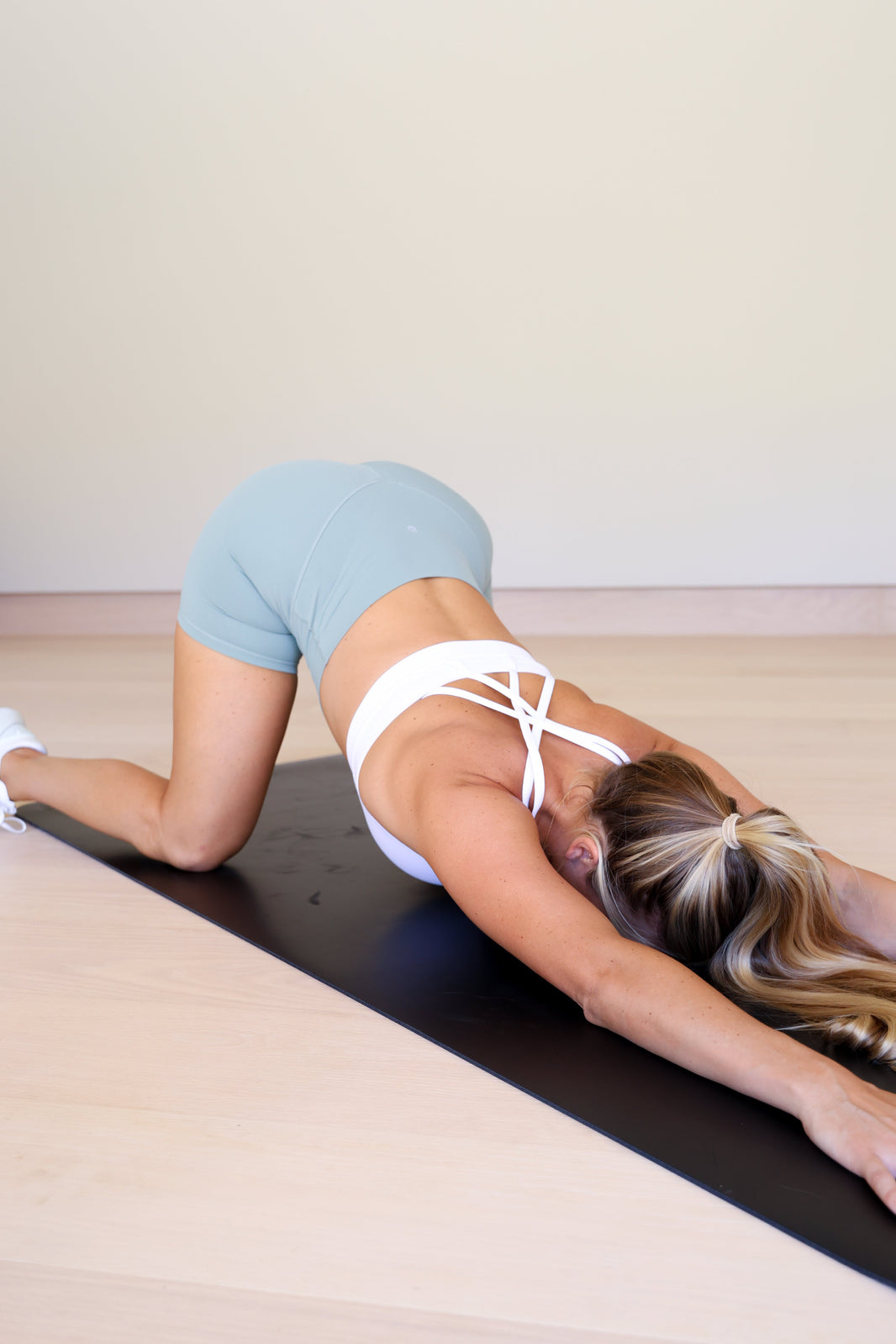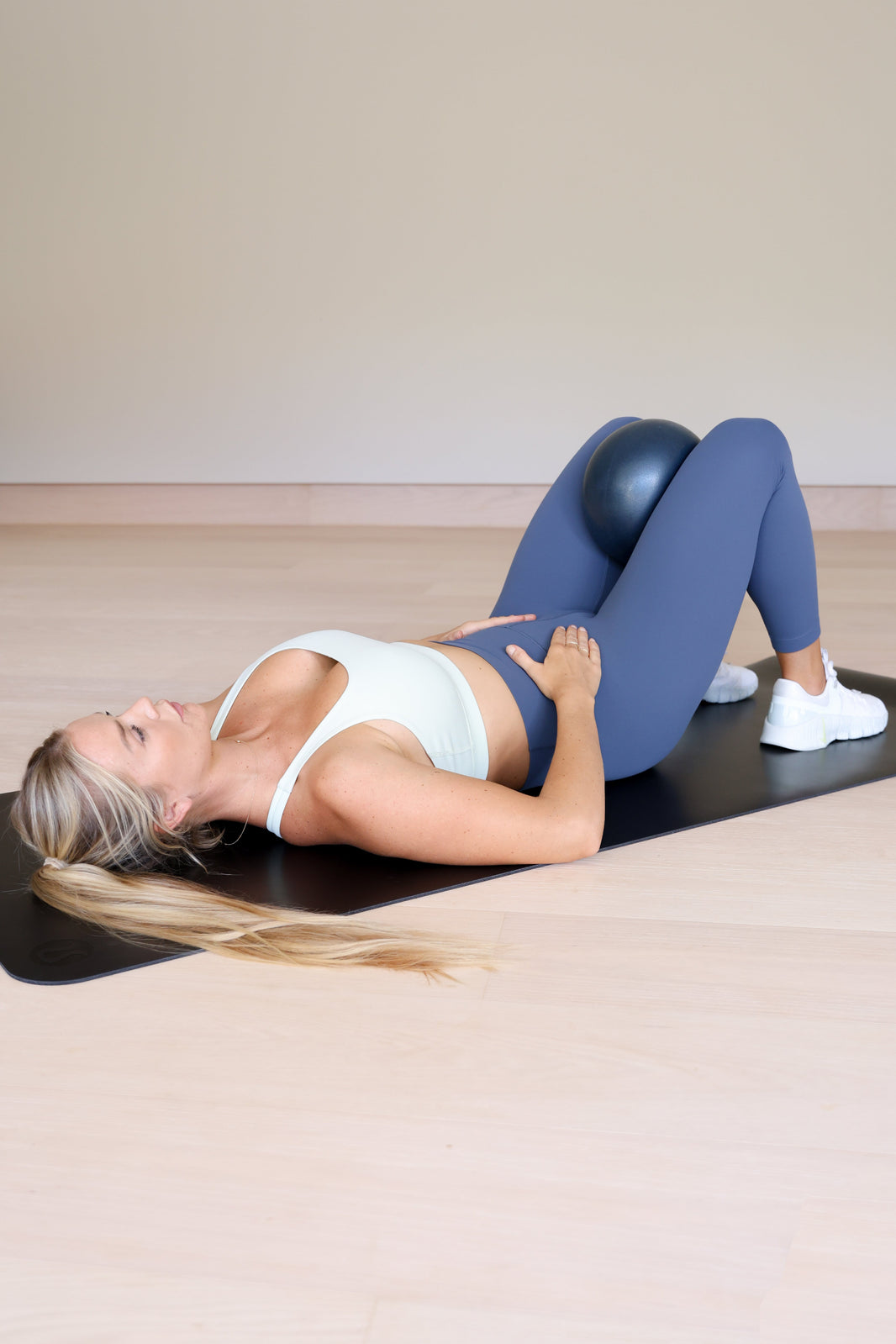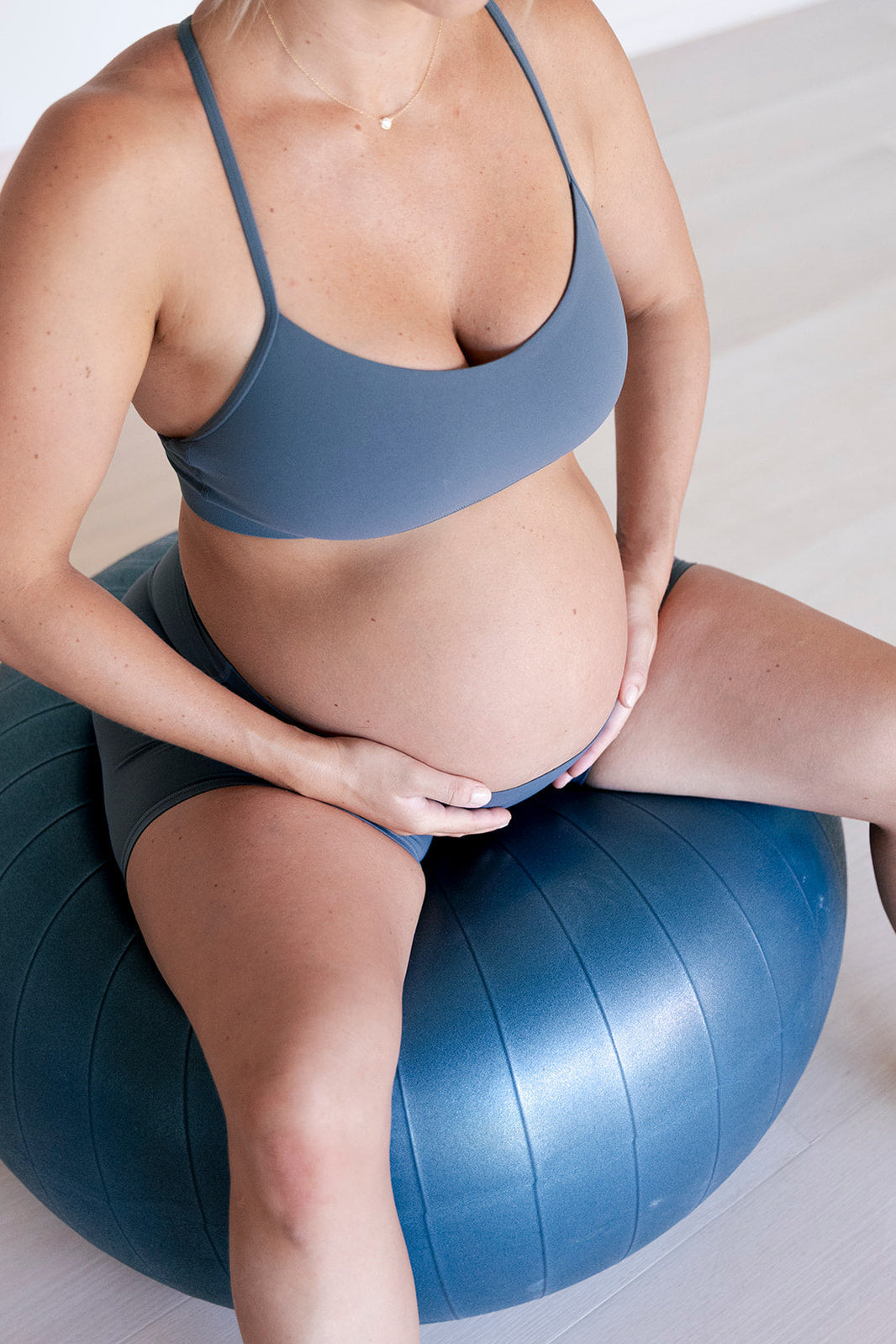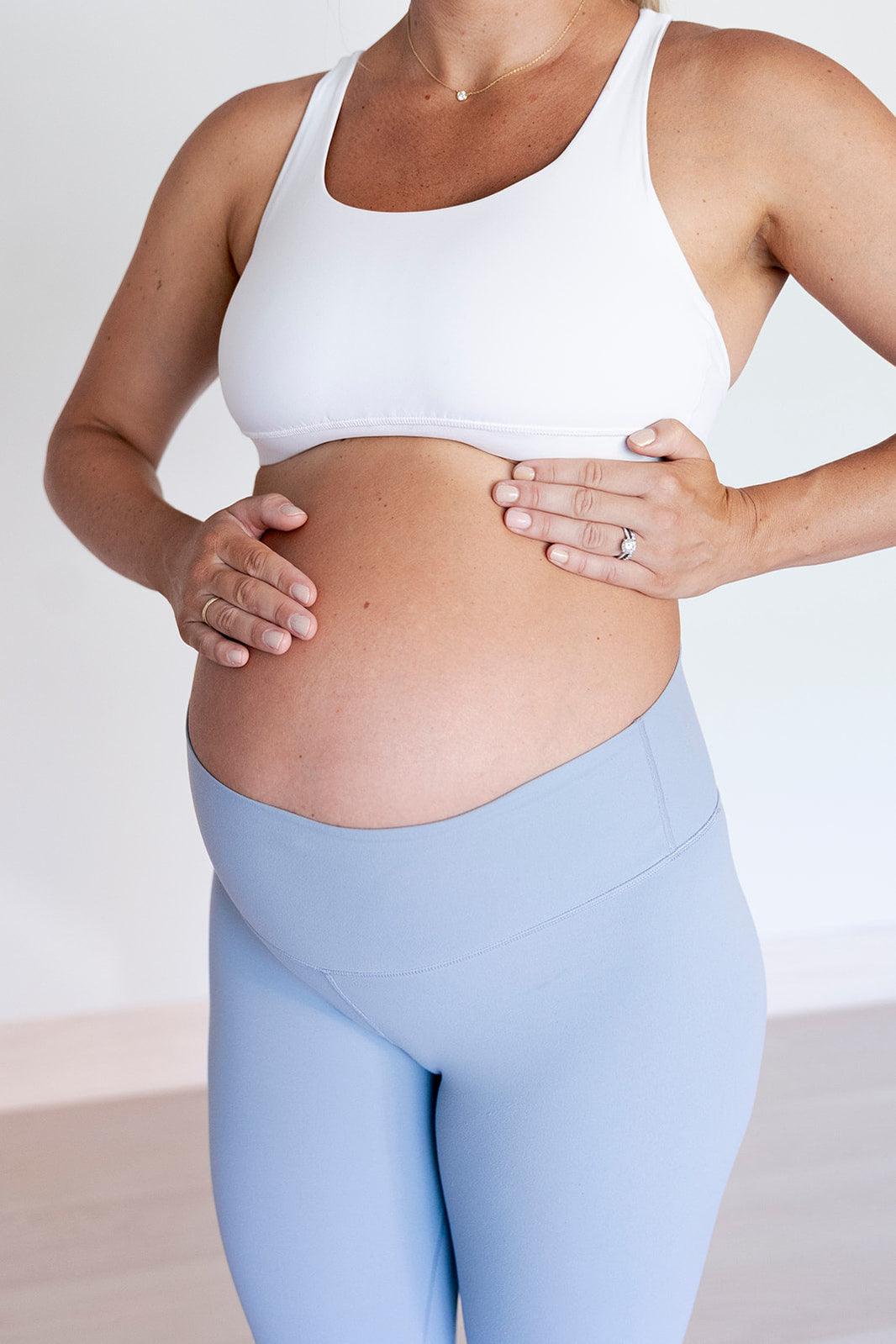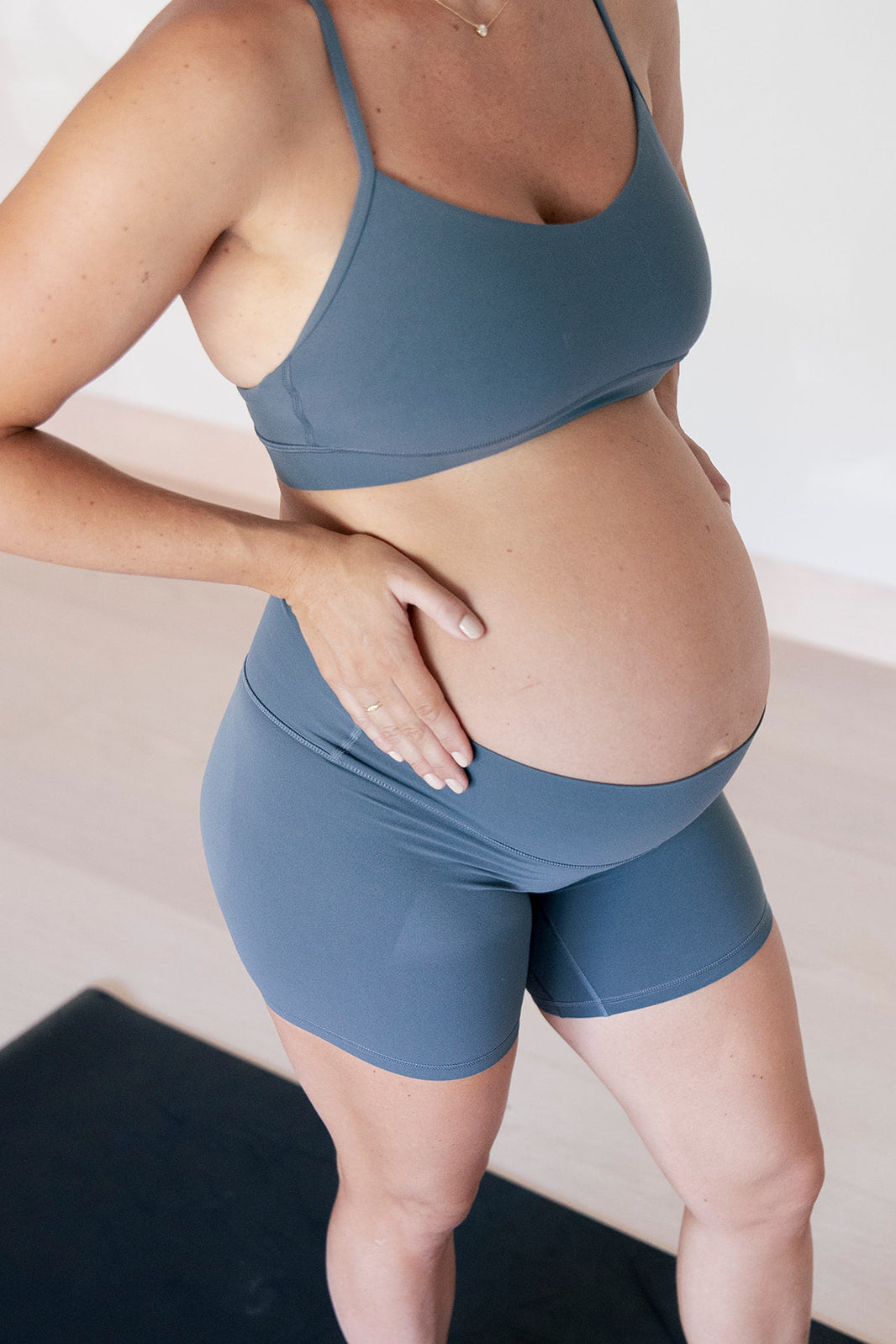Pregnancy is an incredible journey, and as you get closer to labor, preparing your pelvis and pelvic floor can make a big difference in your birth experience. Your pelvis is designed to shift and adapt during pregnancy and birth, helping your baby move down and out. Throughout pregnancy, hormonal changes allow for increased mobility, widening the pelvis and promoting more externally rotated hip positions to accommodate baby. However, many mommas don’t realize that working on pelvic mobility and relaxation can make labor smoother. Let’s break down how baby moves through the pelvis and why mobility matters for an easier, more efficient birth.
Why Does Working on Mobility During Pregnancy Help During Labor?
A mobile pelvis makes it easier for baby to move down, rotate, and be born. If the pelvis is stiff or lacks balance from side to side, baby may struggle to find their way through, leading to longer or more difficult labor. Balanced pelvic floor muscles also play a role—too much tightness can create resistance. Mobility exercises help reduce discomfort as you are moving through labor, improve labor efficiency, and allow for more comfortable movement into different birth positions.
How Baby Moves Down Through the 3 Levels of the Pelvis

Labor is a journey—not just for you, but for your baby! As baby descends, they move through three different levels of the pelvis: the inlet, midpelvis, and outlet. Understanding how each level works and what you can do to create space can help make the process more efficient and comfortable.
-
Pelvic Inlet (Top of the Pelvis)
The inlet is where baby first engages in the pelvis, usually during the last few weeks of pregnancy or early labor. Creating space in the upper pelvis helps baby get into an optimal position for descent. Encouraging hip external rotation, a posterior pelvic tilt, and increased hip flexion can make more room for baby’s head. Positions that can encourage baby to engage effectively.:
Deep squat with posterior pelvic tilt:
Find a deep squat position by using support of your upper body on something. Lightly tuck your tailbone between your legs to make you back into a “C” curve. Use a yoga block under your bottom if you need extra support
Forward-leaning inversions
Have your knees supported on a couch or even elevated on some pillows as your head and chest move below your pelvis and support your elbows onto the ground. Think bottom to the sky and elbows on the ground. Rest and breath in this position
Hip ER Childs pose prayer stretch
On hands and knees, bring your knees out wider than your hips and feet touching. Reach your arms forward and rest your head and chest onto the ground to relax and breathe.
2. Midpelvis (Middle Section of the Pelvis)
As baby moves down, they rotate through the midpelvis, which is narrower than the inlet. Baby needs space to move from side to side, so mobility from right to left is key. Exercises that can help create more balanced movement in the midpelvis:
Wide legged half-kneeling rocks
In a half kneel position, have your forward leg be slightly out at a 45 deg angle from your body. Lightly rock your weight from your front leg to the back leg getting a moderate stretch in your inner thigh of the back leg as you rock toward your forward leg.
Knee elevated cat cows (Use a folded up towel (yoga block or throw pillow) under one knee to elevate your pelvis and work on moving through cat cows)
On hands and knees, elevate one knee either using a yoga block or a pillow. Move in and out of an arched and tucked position of your lower back and pelvis 10-20x. Switch the side that’s elevated to do this on the opposite side.
Foot Elevated Lateral Lunges
Using a curb, stair, or yoga block, have one leg elevated on the surface facing out at a side angle facing 90 degrees away from your body. Lightly rock your weight onto your elevated leg into a lateral lunge like position. Move in and out of this lunge position. Switch sides and try it on the other side
These movements also encourage baby to rotate, allowing them to navigate through this middle section with less resistance.
3. Pelvic Outlet (Lower Pelvis, Birth Canal)
The final stage of descent happens in the outlet, where baby prepares to be born. To open this area, mommas benefit from internal hip rotation, hip extension, and an anterior pelvic tilt. Relaxing and lengthening the pelvic floor is critical at this stage too. Exercises to help baby move through smoothly:
Couch Supported Tail Wags
With upper body and elbows supported on a couch or ottoman, bring knees in and feet rotated out. Stick your tailbone up and back in an anterior pelvic tilt position and rock your hips right to left as if wagging tailbone behind you
Hip internally rotated Puppy Pose with Anterior Pelvic Tilt
Find yourself on hands and knees widths knees out from one another for a moderate stretch in your inner thighs and feet slightly outward from your knees. Move your pelvis into an anterior pelvic tilt by arching your lower back and moving your tailbone up to the sky. You can hold this for 60-90 sec for a stretch or move in and out of an arched and tucked position.
Learning to fully relax the pelvic floor allows baby to pass through with less resistance and strain.
Pelvic Floor Muscle Preparation for Labor
As baby moves down, they interact directly with the pelvic floor muscles. Many mommas focus on strengthening their pelvic floor, but learning to lengthen and relax the pelvic floor is just as important for labor. Your deep pelvic floor muscles have to be able to elongate and widen as baby passes through and then your superficial muscles have to be able to open and tolerate maximum stretching as babies head pass into the world. A relaxed and mobile pelvic floor allows for smoother baby movement and reduces the risk of tearing or prolonged pushing.
Avoiding Uneven Tension in the Pelvic Floor Muscles
Uneven pelvic floor tension from right to left can create asymmetry in the pelvic outlet, making it harder for baby to descend and rotate effectively in the final stages of labor.
Here’s why this matters:
Obstructed Rotation – Baby needs to rotate through the birth canal. If one side of the pelvic floor is tighter, it can restrict this movement, potentially leading to a stalled labor or the need for interventions.
Asymmetrical Pressure – Uneven muscle tension can create imbalances in how the pelvic bones move, making one side of the pelvis less open than the other. This can cause baby to descend at an angle, leading to ineffective pushing or prolonged labor.
Increased Risk of Tearing or Straining – If one side of the pelvic floor is tighter, it may not stretch evenly as baby crowns, increasing the risk of tearing or making delivery more difficult.
Potential for Baby’s Head to Engage Poorly – When the pelvic floor muscles don’t lengthen symmetrically, baby may have difficulty engaging in the optimal position, leading to malpositioning (e.g., asynclitism, where the head tilts to one side).
Balancing right-to-left pelvic mobility and tension through targeted stretching, breathwork, and asymmetrical hip mobility exercises can help ensure baby has an easier path through the pelvis during the final stage of labor.
How do we know if we may be experiencing pelvic floor tightness? Signs and symptoms of pelvic floor tightness can be low back pain, tailbone pain, sacral pain, hip pain, bladder urgency, difficulty emptying your bladder, or pain with sex.
Try out these exercises to promote mobility and equality throughout pelvic floor muscles:
Pelvic Floor Relaxation Techniques. Deep inhalation with visualization of flower blooming out of vagina, supported deep squats, Child’s pose, puppy pose and Happy Baby pose.
Pelvic Floor Mobility Exercises:
Sidelying Half Happy Baby: Opens the pelvis and encourages hip mobility.
Lying on your side with head supported, bring one foot up with hip and knee flexed and bring your hand up and grab onto your outer ankle or wrap your arm around your thigh and support your thigh outward.
Puppy Pose Rock Backs: Gently stretches the pelvic floor muscles and opens the pelvic outlet
On hands and knees, bring your knees and feet out wide until you feel a stretch in your inner thighs. Lightly rock your bottom forward and back towards your heels.
Cat-Cows: Encourages pelvic floor and mid pelvis mobility
On hands and knees, work on lightly arching and tucking your pelvis and lower back as if you are sticking your tail feather behind you and then tucking your tail between your legs
Hip Asymmetry Work for Uneven Tension: Forward and lateral lunges, half-kneeling hip flexor mobility, and 90/90 hip mobility exercises to balance movement from right to left.
Daily Movement Strategies to prevent pelvic tension:
- Move frequently and go on small walks throughout the day to prevent stiffness and promote pelvic floor a pelvic mobility.
- Use a physioball while sitting to encourage gentle mobility by doing pelvic tilts and pelvic circles.
- Avoid prolonged sitting with poor posture. Keep a lumbar roll behind your lower back and make sure your feet are supported to avoid tucked under pelvis positions that can create pelvic floor tightness and tension.
- Incorporate a daily mobility routine in the morning or evening to encourage pelvic flexibility.
Preparing your pelvis and pelvic floor for labor isn’t just about strength—it’s about mobility, balance, and relaxation. By incorporating pelvic mobility exercises, breathwork, and daily movement strategies, you create the optimal environment for baby to descend smoothly. The more space and flexibility you provide, the easier and more efficient labor can be. Try adding these movements into your routine and listen to your body. Your pelvis is designed for birth—let’s help it work with you, not against you!



